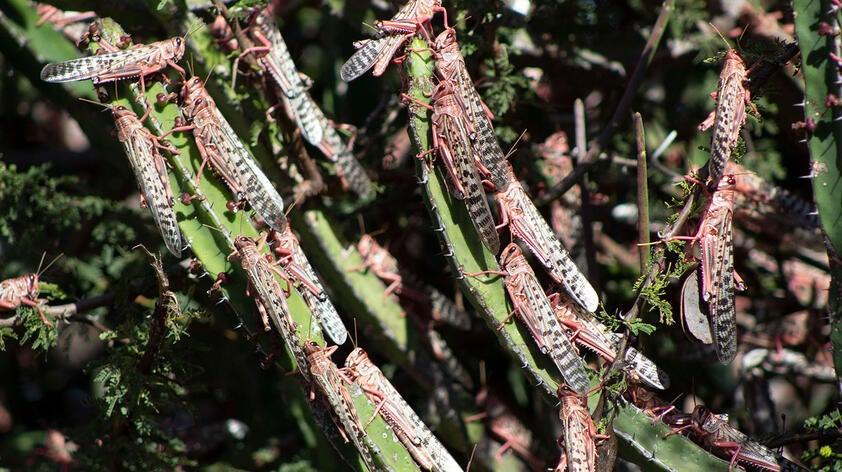
Locust invasion in Kenya
Swarms of desert locusts, believed to have originated from Yemen, made a grand entry into East Africa in January 2020. The United Nations experts described the infestation as the worst in the last 70 years in Kenya, and scientists have established explicitly that the counties of northern Kenya had been hit the hardest by the locusts. Due to the damage to crops and vegetation, the World Bank projects that the livestock industry of pastoralist communities in Ethiopia, Kenya and Sudan will lose billions of dollars by the end of 2020. So far, the infestation has greatly affected parts of Rift Valley in central and northern Kenya, while most parts of the country still remain under threat if the existing swarm of locusts lay eggs and spawn another generation.
Hot and wet conditions have favored massive hatchings and spread of the desert locusts. According to Food and Agriculture Organization (FAO), warm temperatures triggered and aided egg laying, while the existence of strong winds supported their spread. Reports indicated that, with the presence of above average rainfall in East Africa region, vast swarm of desert locusts could mature and lay eggs, with survival boosted by plenty of greening vegetation. Rains also are not suitable conditions for the application of insecticides, challenging control efforts. One female locust can lay eggs three times in succession and can produce up to 100 eggs in a pond. Thus, with current optimal conditions, most of the hatched hoppers can mature and continue the devastating cycle.
Efforts to combat the desert locusts in Kenya were sped up with the identification of four regions in northern Kenya where they were laying eggs. These regions, Marsabit, Samburu and two parts in Isiolo county were closely monitored as a spread point.
Researchers had earlier suggested that controlling the young hoppers was easier because they do not possess wings and thus cost effective. The FAO in association with the government of Kenya increased attempts in boosting ground surveillance by offering quality and efficient trainings to recruited youths from the National Youth Service (NYS) program in order to coordinate and lead the locust eradication process.
However, challenges remain. The process of desert locust mapping and monitoring presented immense difficulties as a result of inadequate capacity building to aid in the control, survey, and monitoring of a vast remote landscape. Further, Covid-19 has also slowed down the controlling process since people have been sheltering-in-place, resulting in low response and slowed/restricted travel between the locked counties in Kenya. Local pastoralist communities in the northern parts of Kenya where the Leopard Conservation Program is based were seen chasing the locusts using sticks in desperation. Even so, the recent trends observed locally are positive and promising and the communities are filled with hope as the voracious insects finally show signs of fading.
Ltarasi Lendunda from Kirimon, said, “If the locust persists and increase in numbers, they will eat all the crops and vegetation that the livestock primarily depend on and people will languish in poverty since our animals is all we have.” Locust invasion is seriously threatening the pastoralist communities together with their fragile rangelands. With the closure of livestock markets due to Covid-19, the locust invasion followed by the pandemic has proven to be one of the most challenging years for pastoralist communities in recent memory.
Lenguya Laiyon is a Research Coordinator for the Leopard Conservation Program, Kenya.













